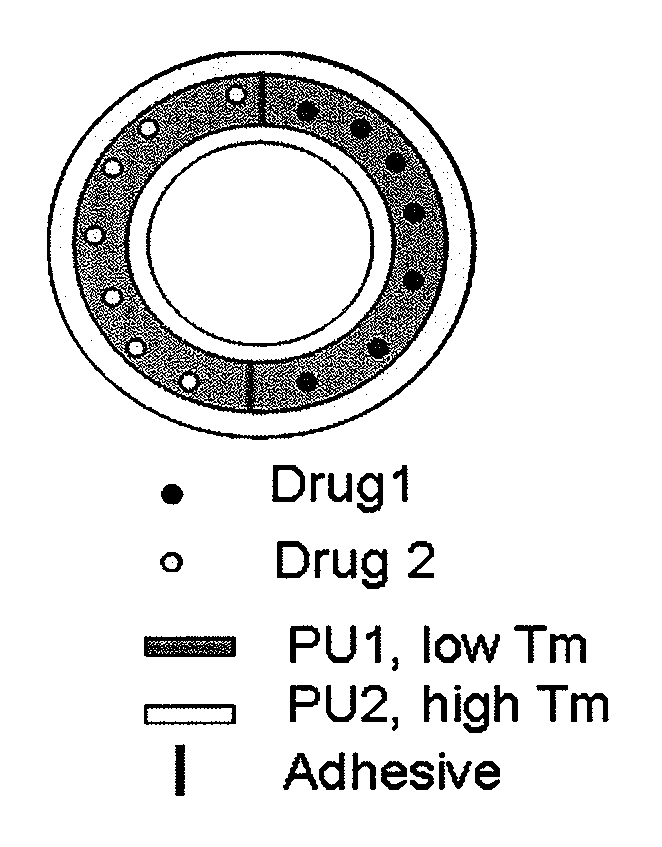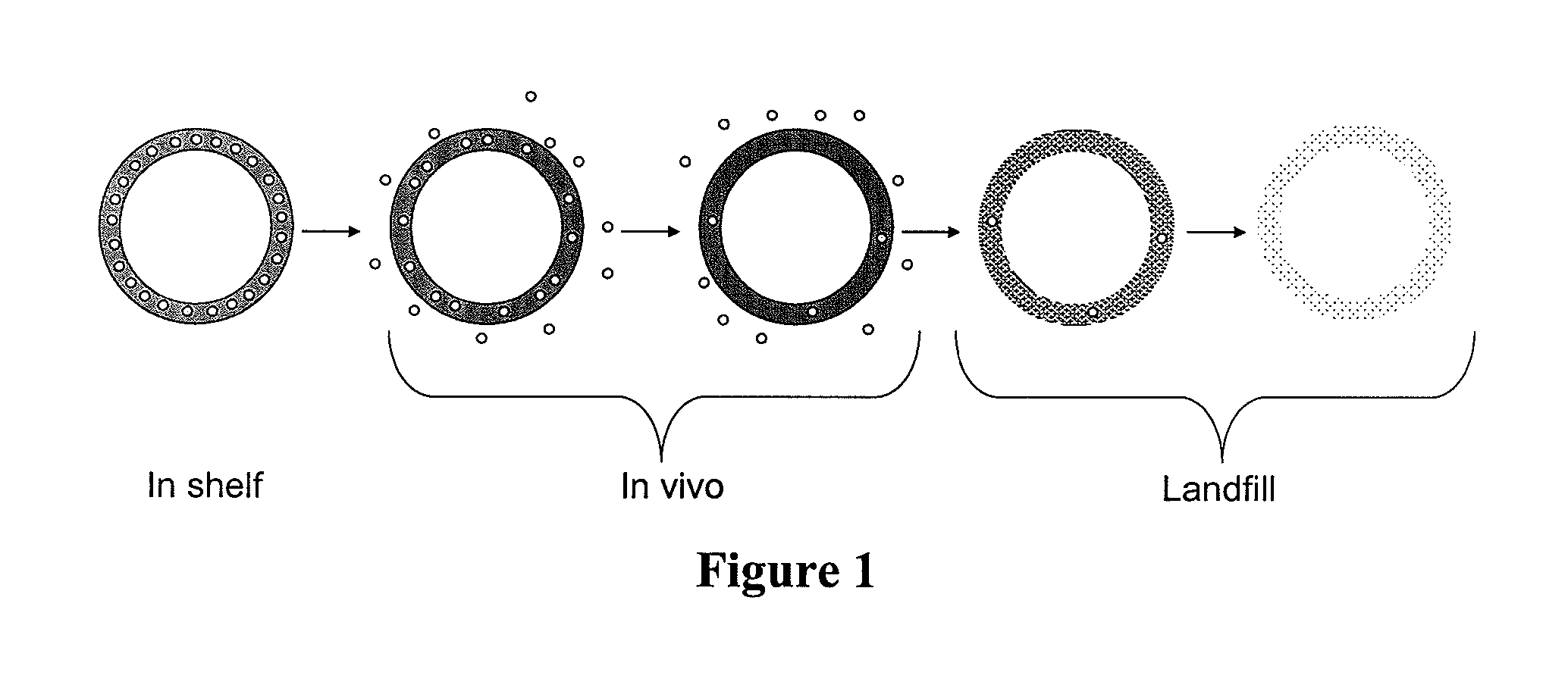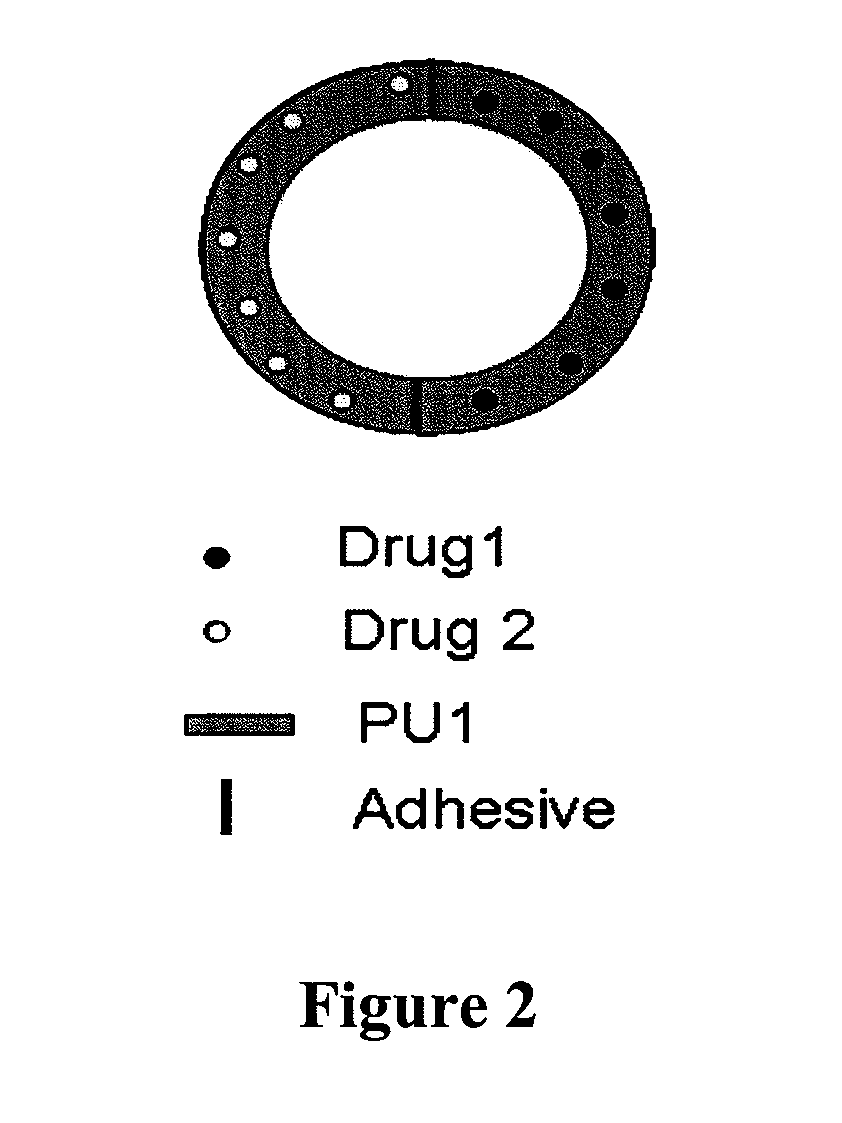Biodegradable intravaginal devices for delivery of therapeutics
- Summary
- Abstract
- Description
- Claims
- Application Information
AI Technical Summary
Benefits of technology
Problems solved by technology
Method used
Image
Examples
example 1
Copolymer Comprising Polylactide
[0197]Step (a) Preparation of terathane-co-(polylactide)
[0198]Terathane is dried under vacuum with stirring at 50° C. for 8-10 hrs. The molten terathane is weighed in a dried reaction flask with a stir bar. Lactide, either a mixture of D,L-lactide, or the individual isomers (0.04 moles or 4 equivalents) is added to terathane. The reaction flask is then covered and flushed with N2. The reaction mixture is then heated to 140° C. with stirring for 1 hour or until all of the lactide has melted. Then temperature is lowered to 110° C. and tin octanoate catalyst (0.02 g) is added using a syringe. The reaction is continued at 110° C. for 48 hrs. At this point it is convenient to analyze the reaction mixture for the presence of unreacted lactide. A sample is taken extracted with a 1:9 dioxane / acetonitrile mixture followed by quantification of the extract by HPLC. The unreacted lactide content can also be quantified by 1H NMR. If the unreacted lactide content i...
example 2
Step (a) Preparation of terathane-co-(caprolactone)
[0201]Terathane is dried under vacuum with stirring at 50° C. for 8-10 hrs. The molten terathane is weighed in a dried reaction flask with a stir bar. Caprolactone (0.04 moles or 4 equivalents) is added to terathane. The reaction flask is then covered and flushed with N2. The reaction mixture is then heated to 140° C. with stirring for 1 hour or until all of the lactide has melted. Then temperature is lowered to 110° C. and tin octanoate catalyst (0.02 g) is added using a syringe. The reaction is continued at 110° C. for 48 hrs. At this point it is convenient to analyze the reaction mixture for the presence of unreacted lactide. A sample is taken extracted with a 1:9 dioxane / acetonitrile mixture followed by quantification of the extract by HPLC. The unreacted lactide content can also be quantified by 1H NMR. If the unreacted lactide content is more than about 2% by weight of the reaction mixture, the reaction can be worked up and pu...
example 3
[0204]Preparation of pre-polymer diols derived from α-hydroxy cyclic ester [Bio] unit pre-cursors having the formula:
[0205]The following general procedure can be used to prepare the pre-polymer diols according to the present disclosure (See Choi et al, J. Biomater. Sci., Polym. Edn., 13 (10), 1163-1173, 2002 included herein in its entirety by reference).
[0206]A [Polyol] unit precursor monomer, for example, polytetramethylene ether glycol (polyterathane) having an average molecular weight of about 2000 g / mol and lactide (R equal to methyl) are charged to a round bottom flask and the mixture is heated to 140° C. until the contents are fully melted. The flask is evacuated several times and purged with nitrogen until and inert atmosphere is achieved. The temperature is then lowered to 120° C. and tin octoate (0.001 mol equivalent based upon the amount of lactide used for the formation of the pre-polymer diol). The reaction is allowed to proceed for 24 hours under the inert atmosphere of...
PUM
| Property | Measurement | Unit |
|---|---|---|
| Time | aaaaa | aaaaa |
| Time | aaaaa | aaaaa |
| Digital information | aaaaa | aaaaa |
Abstract
Description
Claims
Application Information
 Login to View More
Login to View More - R&D
- Intellectual Property
- Life Sciences
- Materials
- Tech Scout
- Unparalleled Data Quality
- Higher Quality Content
- 60% Fewer Hallucinations
Browse by: Latest US Patents, China's latest patents, Technical Efficacy Thesaurus, Application Domain, Technology Topic, Popular Technical Reports.
© 2025 PatSnap. All rights reserved.Legal|Privacy policy|Modern Slavery Act Transparency Statement|Sitemap|About US| Contact US: help@patsnap.com



